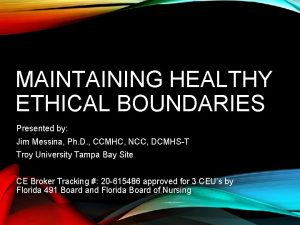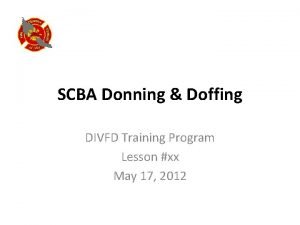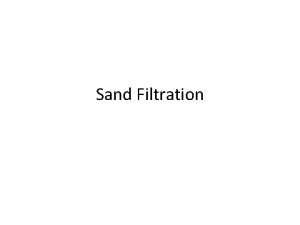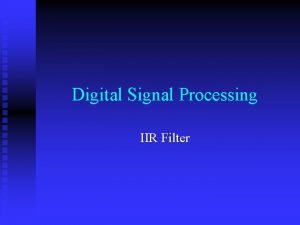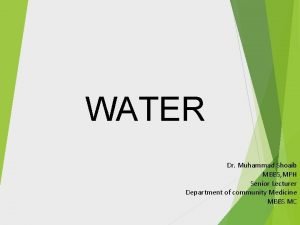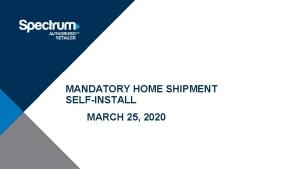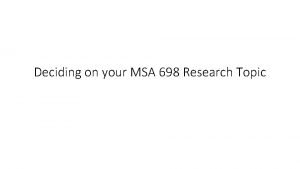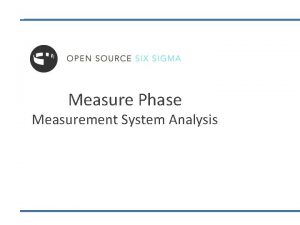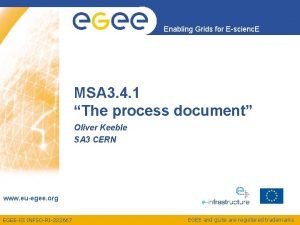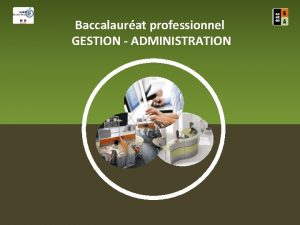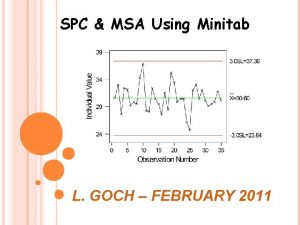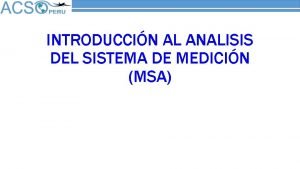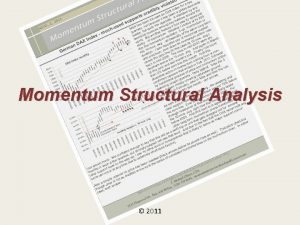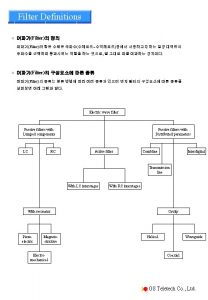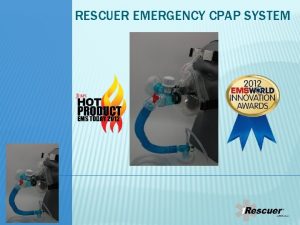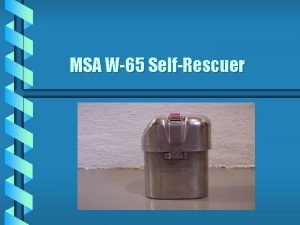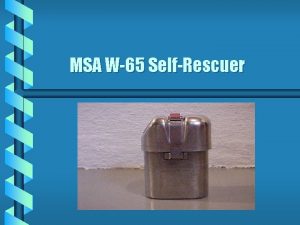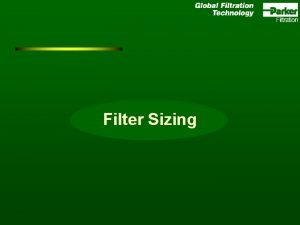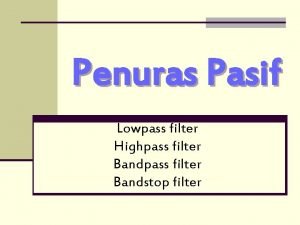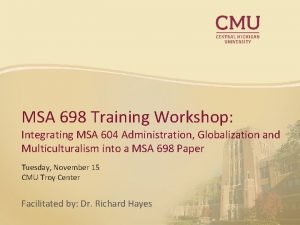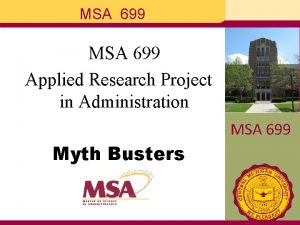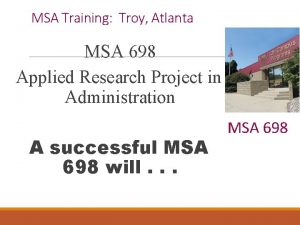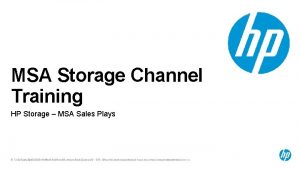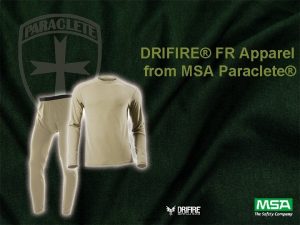Donning Instructions for MSA W65 Filter Self Rescuer

















- Slides: 17

Donning Instructions for MSA W-65 Filter Self Rescuer

� 1 �If the protective boot is covering the device, remove it.

� 2 �Release the locking device by pressing the thumb under the red release lever and pushing up. . .

� 3 �. . . until Tamper Evident Seal is broken.

� 4 � Grip the red release lever between thumb and forefinger and pull up hard. This should break the seal and release the locking mechanism to loosen the cover.

� 5 �Remove the cover from the container and discard it.

� 6 �Grip the head harness of the respirator, and pull the respirator out of the container. (If the container is dented, preventing release, see step 14. ) �Discard container.

� 7 �Pull the nose clip away from the mouthpiece.

� 8 �Insert mouthpiece lugs into mouth. . . bite the lugs firmly.

� 9 �Close the lips tightly around the mouthpiece. A tight seal must be maintained throughout escape to safety.

� 10 �Pull the pads of the nose clip apart and position pads over the nostrils

� 11 �When released, the pressure of the pads seal the nasal passage.

� 12 �Take off headgear and pull harness over head. Put lower strap behind the head, and upper band above the forehead as shown. The head harness will support the weight of the respirator.

� 13 �Replace headgear. Be sure not to dislodge the head harness. � The Self-Rescuer is now ready for use. Breathing though the devise is obviously somewhat more difficult than breathing under normal conditions. This will become more apparent under extreme exertion. Therefore, when escaping, keep calm and avoid exerting yourself too much. If possible, rest for short periods

� 14 �Before going underground, every miner should examine his Self-Rescuer for any external damage. � If the container is dented, it may not be possible to remove the respirator from the container. In this case, the wearer can still breathe with the filter and the inner wall in the container. The space between the filter and the inner wall is large enough to allow normal breathing. Because of the greater weight, it would be advisable to ease the load on the teeth and jaw by supporting the container with one hand.

Inspection � The Self-Rescuer should be periodically checked for air tightness by immersing it in warm water and looking for escaping air bubbles as you would check an inner tube for a leak. Another method is to weigh the apparatus periodically. The weightas-shipped, which includes the metal name plate weight, is indicated in grams on the bottom of each unit; any leakage will result in heavier weight due to moisture absorption. An increase of up to 10 grams is considered acceptable. If the weight increase more than that, dispose of unit. �Also check each Self-Rescuer periodically for dents, and damage to seals.

Approvals �The Self-Rescuer Respirator W 65 is approved by the Mine Safety and Health Administration and the National Institute of Occupational Safety and Health (Approval No. TC-14 G-82) for self-rescue from carbon monoxide. (Previously assigned Bureau Approval No. 14 F-76. ) �Service life �The Self-Rescuer exceeds government-specified (NIOSH/MSHA) service-life requirements of 60 minutes against 1% carbon monoxide in air.
 20 question self- assessment for healthy boundaries scoring
20 question self- assessment for healthy boundaries scoring Lesson xx
Lesson xx Donning and doffing competency
Donning and doffing competency Tracheitis
Tracheitis Pulse check in unresponsive victim
Pulse check in unresponsive victim Perbedaan rapid sand filter dan slow sand filter
Perbedaan rapid sand filter dan slow sand filter Iir filter design by approximation of derivatives
Iir filter design by approximation of derivatives Difference between rapid sand filter and slow sand filter
Difference between rapid sand filter and slow sand filter Example of ideal self and actual self
Example of ideal self and actual self Activate.spectrum.net
Activate.spectrum.net Msa ideas
Msa ideas Measurement system analysis six sigma
Measurement system analysis six sigma Msa bugs
Msa bugs Bep gestion administration
Bep gestion administration Mucobuccal fold of maxilla
Mucobuccal fold of maxilla Spc and msa
Spc and msa Analisis msa
Analisis msa Michael oliver momentum structural analysis
Michael oliver momentum structural analysis
